Connecting You to More
| Term | Description |
|---|---|
| Brazing | The joining of ends of two wires, rods or groups of wires with a non-ferrous filler metal at temperatures above 800F (427C). |
| Breakdown (Puncture) | A disruptive discharge through insulation |
| Breakdown of Insulation | Failure of an insulation resulting in a flow of current through the insulation. It may be caused by high voltage, defects or decay. |
| Breakdown Voltage | The voltage at which the insulation between two conductors breaks down |
| Breakout | The point at which a conductor or group of conductors breaks out from a multi-conductor cable to complete circuits at various points along the main cable |
| Building Wire | Wire used for light and power (600 volts or less) usually not exposed to outdoor environments |
| Bunch Stranding | A group of wires of the same diameter twisted together without a predetermined pattern |
| Buried Cable | A cable installed directly in the Earth without use of underground conduit; also called "direct burial cable." |
| C.S.A. | Abbreviation for Canadian Standards Association |
| Cable | A group of individually insulated conductors in twisted or parallel configuration, with or without an overall covering |
| Cable Assembly | A completed cable and its associated hardware ready to install |
| Cable Filler | The material used in multiple conductor cables to occupy the spaces formed by the assembly or components, thus forming a core of the desired shape (normally cylindrical). |
| Cabling | The twisting together of two or more insulated conductors to form a cable |
| Cabling Factor | Used in the formula for calculating the diameter of an unshielded, unjacketed cable (D=Kd, where the cable diameter, K is the factor and d is the diameter of the insulated conductor) |
| Caged Armor | A construction using wires within a jacket to increase mechanical protection and tensile strength. This construction is sometimes used in submarine cables. |
| Canadian Standards Association International (CSA) | Test products for compliance to national and international standards, and issue certification marks for qualified products. Certification marks tell potential customers and users that a product has been evaluated by a formal process-involving examination, testing and follow-up inspection-and that it complies with applicable standards for safety and performance. |
| Capacitance | Storage of electrically separated charges between two plates having different potentials. The value depends largely on the surface area of the plates and the distance between them. |
| Capacitance Coupling | Electrical interaction between two conductors caused by the capacitance between them |
| Capacitance, Direct | The capacitance measured directly from conductor to conductor through a single insulating layer |
| Capacitance, Mutual | The capacitance between two conductors and all other conductors, including shield, short-circuited to ground |
| Capacitance, Unbalance | An inequality of capacitance between the wires of two or more pairs which results in a transfer of unwanted signals from one pair to others |
| Capacitance, Unbalance To Ground | An inequality of capacitance between the ground capacitance of the conductors of a pair which results in a pickup of external source energy, usually from power transmission lines |
| Carrier | The basic woven grouping of a braided shield, consisting of one or several parallel ends |
| Cathode | Negative pole of an electric source |
| Cathode Protection | The control of the electrolytic corrosion of an underground or underwater metallic structure by the application of an electric current through a sacrificial anode in such a way that the structure is made to act as a cathode of an electrolytic cell |
| CATV | An acronym for Community Antenna Television |
| CCTV | Closed Circuit Television |
| Cellular Polyethylene | Expanded or "foam" polyethylene consisting of individually closed cells suspended in a polyethylene medium |
| CENELEC | CENELEC, the European Committee for Electrotechnical Standardization, was created in 1973 as a result of the merger of two previous European organizations: CENELCOM and CENEL. Today, CENELEC is a non-profit technical organization set up under Belgian law and composed of the National Electrotechnical Committees of 23 European countries. In addition, 12 National Committees from Central and Eastern Europe are participating in CENELEC work with an Affiliate status. Their ultimate goal as affiliates is gaining full membership to CENELEC Standardization activities. |
| Center-to-Center Distance | See definition for "Pitch" |
Showing 61 - 90 of 567

